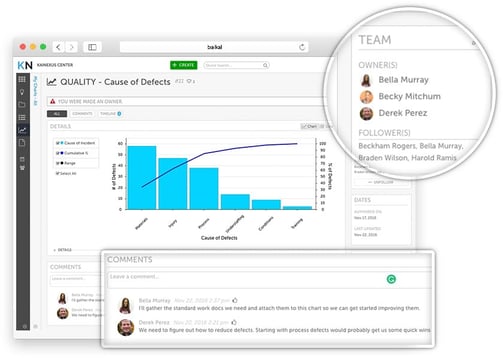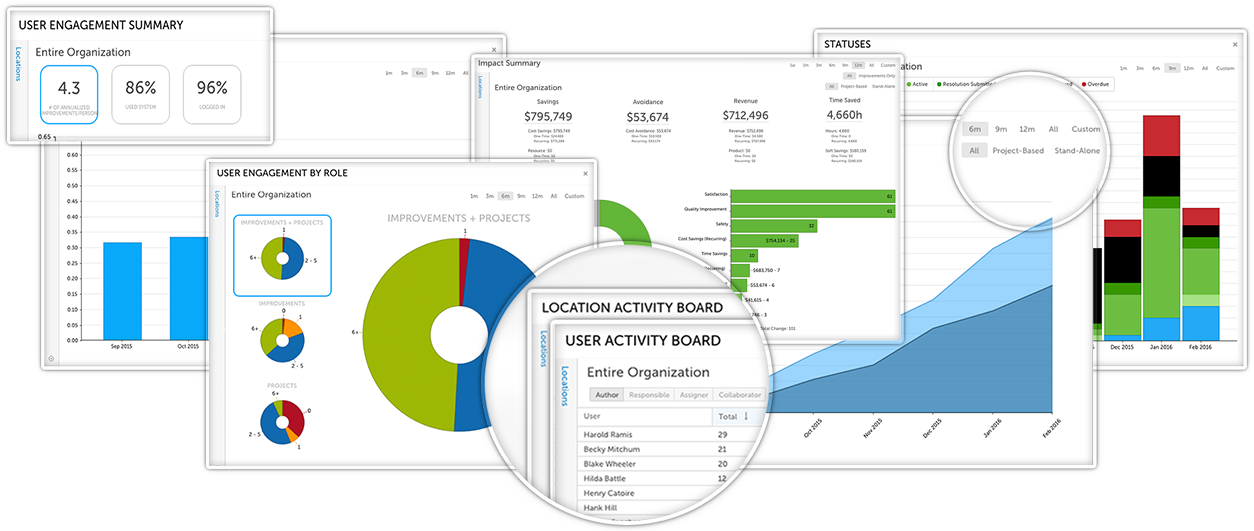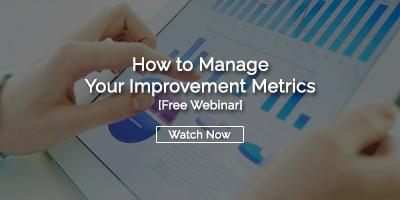 When I get asked what Lean software does, I like to answer in two ways. First, I’ll address what it does in terms of functionality. What features and capabilities does it offer? That’s pretty straightforward. The second part of the answer is actually more interesting. That’s all about what Lean software helps clients achieve. Why are those features important, and what impact can users expect?
When I get asked what Lean software does, I like to answer in two ways. First, I’ll address what it does in terms of functionality. What features and capabilities does it offer? That’s pretty straightforward. The second part of the answer is actually more interesting. That’s all about what Lean software helps clients achieve. Why are those features important, and what impact can users expect?
This post will cover both.
What are the Features and Capabilities of Lean Software?
Of course, not all products that claim to be Lean management software are the same. Some are project management solutions that have been adapted to the purpose. For this post, we’re covering the features you should expect from a cloud-based, mobile-ready solution designed from the ground up to support the Lean methodology.
Workflow with Automated Alerts and Notifications
Lean software helps ensure that projects move forward by alerting team members when action is required or when assignments are missed. Email alerts help keep people engaged and informed.
 Advanced Search capabilities
Advanced Search capabilities
The ability to search the knowledge repository for past projects gives users the ability to build on work that has already been done and avoid past mistakes. Best practices are collected, and everyone gets smarter with each Lean project.
Cross-Functional Collaboration Tools
Many of the most impactful Lean improvements require cross-functional collaboration. The best Lean management systems make it easy for people to work together on projects, even if they work for different functional areas.
Advanced Reporting and Analytics
Lean leaders understand the importance of reporting on the impact of resolving opportunities for improvement. Consider Lean software that visualized improvement work and includes impact measurement and sophisticated reporting and analytic capabilities.

Success Broadcasting
Lean culture takes hold when leadership recognizes the efforts of team members and announces success. That makes success broadcasting a must-have feature when considering Lean software.
So, what do all of these great features add up to? That’s the exciting part.
The Impact of Lean Software
Organizations Develop One Version of the Truth
Email is perfect for reminders, but it doesn’t give everyone one place to go for the current state of each Lean project. Likewise, spreadsheets are OK for making lists, but they aren’t dynamic and don’t reach out to keep people engaged. Lean software solves both problems by giving everyone a single, real-time source of information. Meetings become more meaningful, priorities stay aligned, and everyone has access to the information they need to act.
Physical Artifacts are Transformed into Online Assets
Many of the Lean visualization tools so popular with organizations were traditionally physical objects. Kanban and huddle boards are perfect examples. They both do a great job of presenting information about improvements but are limited when people have to go to the place where they are to use them. That’s not always practical in our mobile, always-on world. Cloud-based Lean software digitizes these tools and makes it possible for people to participate and add information from wherever they happen to be. What’s more, it creates a permanent record that won’t get replaced when the next project is added to the board.
Lean Software Helps Spread Improvement Culture
In a way, Lean software forces teams to develop a common language for improvement work. Everyone starts to use the same terminology, and communication is clear. People develop consistent habits for entering opportunities for improvement, and a shared sense of purpose begins to emerge. Lean thinking and activities become a regular part of the daily routine.
People Take Lean Work More Seriously
When the executive team invests in Lean software, they signal to the organization that the approach isn’t just the flavor of the month. The implementation demonstrates a commitment to Lean that employees will recognize. It also shows that leadership is willing to help people be successful by giving them the tools that they need to excel.
Improvement Results Come More Quickly
A Lean software platform keeps supervisors informed about the progress of improvement work so that they can coach the team or remove obstacles early in each opportunity. Everyone knows when a task is assigned, or a due date is missed, keeping this work moving toward the finish line.
Leaders Gain Insight into the Health of Lean
With Lean software in place, leaders can assess how well Lean has been adopted. They know which functional areas and teams are contributing to positive change and which employees should be singled out for recognition. Importantly, leaders will also be able to calculate the impact of improvement work in terms of critical business metrics such as reduced expenses, improved quality performance, better customer satisfaction, and more employee engagement.
Can you implement Lean without technology to support it? Sure. But why not put your team in the best position to succeed by giving them a solution that streamlines the day to day work of improvement and provides decision support and insightful measurement? It’s worth the effort.




Add a Comment